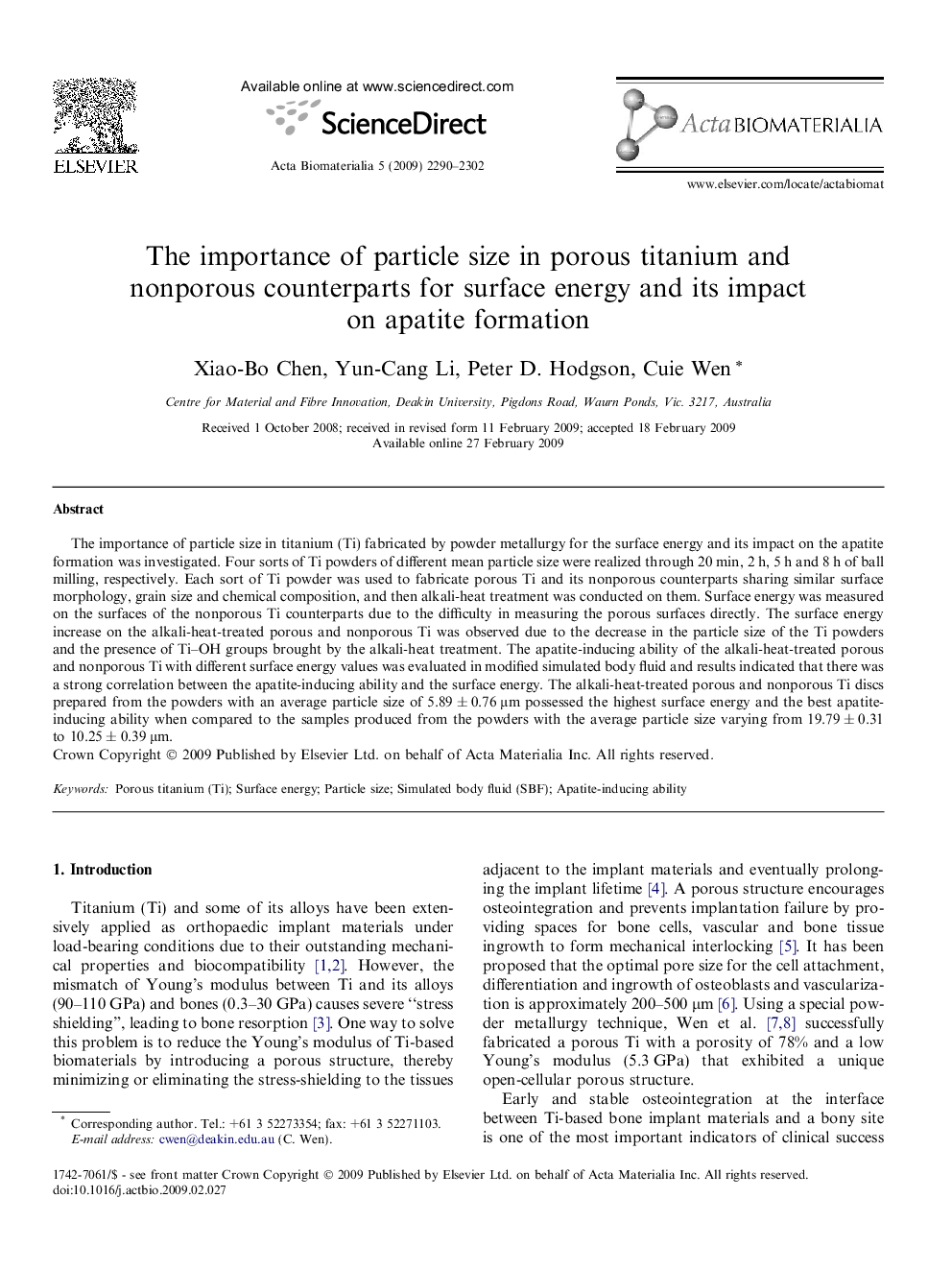| Article ID | Journal | Published Year | Pages | File Type |
|---|---|---|---|---|
| 1287 | Acta Biomaterialia | 2009 | 13 Pages |
The importance of particle size in titanium (Ti) fabricated by powder metallurgy for the surface energy and its impact on the apatite formation was investigated. Four sorts of Ti powders of different mean particle size were realized through 20 min, 2 h, 5 h and 8 h of ball milling, respectively. Each sort of Ti powder was used to fabricate porous Ti and its nonporous counterparts sharing similar surface morphology, grain size and chemical composition, and then alkali-heat treatment was conducted on them. Surface energy was measured on the surfaces of the nonporous Ti counterparts due to the difficulty in measuring the porous surfaces directly. The surface energy increase on the alkali-heat-treated porous and nonporous Ti was observed due to the decrease in the particle size of the Ti powders and the presence of Ti–OH groups brought by the alkali-heat treatment. The apatite-inducing ability of the alkali-heat-treated porous and nonporous Ti with different surface energy values was evaluated in modified simulated body fluid and results indicated that there was a strong correlation between the apatite-inducing ability and the surface energy. The alkali-heat-treated porous and nonporous Ti discs prepared from the powders with an average particle size of 5.89 ± 0.76 μm possessed the highest surface energy and the best apatite-inducing ability when compared to the samples produced from the powders with the average particle size varying from 19.79 ± 0.31 to 10.25 ± 0.39 μm.
